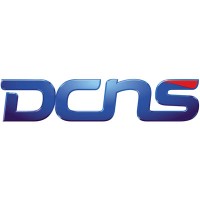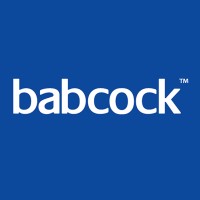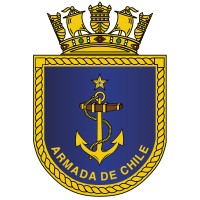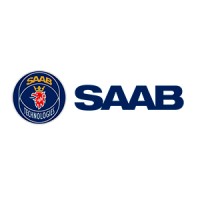
DCNS Company Cyber Security Posture
naval-group.com28 June, 2017 DCNS has changed its name to Naval Group. This new identity is a natural step in the Group’s history, aimed at supporting our ambitions to guarantee our exposure and credibility in international markets. To learn more, visit www.naval-group.com and https://www.linkedin.com/company/naval-group/ Naval Group clarifies both who we are and as well as our mission: help safeguard the sovereign interests of our customers at sea and make the most of our naval skills to support their energy transition. As a global leader in naval defence and marine renewable energy, we are working every day to safeguard security interests by delivering state-of-the-art value and performance to our customers. We are also paving the way towards a cleaner, greener energy for the society of tomorrow and are committed to building a more stable and sustainable world. Naval Group also pays tribute to the pride and concern for excellence of our teams all over the world, uniting them around a same mission.
DCNS Company Details
dcns
305 employees
2513
336
Defense and Space Manufacturing
naval-group.com
Scan still pending
DCN_3188018
In-progress
Between 900 and 1000
This score is AI-generated and less favored by cyber insurers, who prefer the TPRM score.
 DCNS Global Score
DCNS Global Score.png)

DCNS Company Scoring based on AI Models
| Model Name | Date | Description | Current Score Difference | Score |
|---|---|---|---|---|
| AVERAGE-Industry | 03-12-2025 | This score represents the average cybersecurity rating of companies already scanned within the same industry. It provides a benchmark to compare an individual company's security posture against its industry peers. | N/A | Between 900 and 1000 |
DCNS Company Cyber Security News & History
| Entity | Type | Severity | Impact | Seen | Url ID | Details | View |
|---|---|---|---|---|---|---|---|
| DCNS | Breach | 100 | 5 | 08/2016 | DCN2114291023 | Link | |
Rankiteo Explanation : Attack threatening the organization’s existenceDescription: The French submarine company DCNS, which Thales owns 35 percent of, was the target of a security breach that is being looked into by Indian authorities. After more than 22,000 papers about six DCNS Scorpene submarines that were being built in India were leaked, the investigation was launched. The appropriate national French authorities for Defence Security are looking into this matter seriously. This inquiry will ascertain the precise nature of the documents that were leaked. Although the source of the documents has not been disclosed, the Australian has established that the security breach may have major implications for a $38 billion project that the DCNS is currently negotiating with the Australian government. | |||||||
DCNS Company Subsidiaries

28 June, 2017 DCNS has changed its name to Naval Group. This new identity is a natural step in the Group’s history, aimed at supporting our ambitions to guarantee our exposure and credibility in international markets. To learn more, visit www.naval-group.com and https://www.linkedin.com/company/naval-group/ Naval Group clarifies both who we are and as well as our mission: help safeguard the sovereign interests of our customers at sea and make the most of our naval skills to support their energy transition. As a global leader in naval defence and marine renewable energy, we are working every day to safeguard security interests by delivering state-of-the-art value and performance to our customers. We are also paving the way towards a cleaner, greener energy for the society of tomorrow and are committed to building a more stable and sustainable world. Naval Group also pays tribute to the pride and concern for excellence of our teams all over the world, uniting them around a same mission.
Access Data Using Our API

Get company history
.png)
DCNS Cyber Security News
Hacking the sting out of Scorpene: DCNS leak exposes secrets
A data breach involving French shipbuilders DCNS' Scorpene class submarine is a case in point. Dr Gareth Evans November 2, 2016. Share. Copy Link · Share on ...
Secret Data Leak Hits French Submarine Maker: Report
French defense contractor DCNS has been hit by a massive leak of 22400 leaked pages of secret data on its submarines.
DCNS to Showcase Digital Ship Technologies
SMX 3.0 concept-ship - This new concept-ship is a submarine tailored to the needs of Generation Z. On board, 3.0 technologies, better power ...
World Naval Developments - Whistleblower Reveals Australian Submarine-Deal Woes
In August a man turned over a computer disk containing 22,000 pages of technical submarine data to a reporter working for a major newspaper, The Australian. It ...
For DCNS, the future of vessels is digital
DCNS presents its vision of the vessel of the future at the Euronaval Exhibition from 17 to 21 October in Paris-Le Bourget.
Submarine Data Leak Puts Spotlight on European Defense Industry’s Role in Asia
The leak this week of sensitive technical data on India's French-designed Scorpene-class submarines has sent ripples across Asia.
Submarine Data Leak Roils Three Governments
The revelation Aug. 24 by an Australian newspaper that thousands of pages of presumably secret submarine documents were on the loose shook ...
DCNS and Airbus Helicopters join forces to design drone system
DCNS, a world leader in naval defense, and Airbus Helicopters are joining forces to design the future tactical component of France's Naval Aerial Drone.
Beyond LCS: Navy Looks To Foreign Frigates, National Security Cutter
In general, many foreign frigates are over-built for the US Navy's needs. Global navies often use frigates as the mainstay of their battle line, ...

DCNS Similar Companies

Babcock International Group
Babcock is an international defence company operating in our focus countries of the UK, Australasia, Canada, France and South Africa, with exports to additional markets. Our Purpose, to create a safe and secure world, together, defines our strategy. We support and enhance our customers’ defence an

CAE Defence & Security – Indo-Pacific
CAE is the leading global training and simulation company developing solutions that prepare defence forces for mission success. For over 30 years, CAE has had a significant presence in the Indo-Pacific region that today includes more than 300 employees at 20 sites. CAE resolves operational challen

General Atomics
The freedom to explore. The promise to deliver. General Atomics, based in San Diego, CA, develops advanced technology solutions for government and commercial applications. Privately owned and vertically integrated, we have the freedom to invest in the most innovative technologies, and the resource

Armada de Chile
La Armada de Chile es una de las instituciones que conforman las Fuerzas Armadas de Chile, que existe para la defensa de la patria y son esenciales para la seguridad nacional. Tiene como misión “Proveer un Poder Naval y un Servicio Marítimo, que contribuya a resguardar la soberanía e integrida

Saab
As a leading defence and security company, we offer solutions that range from the depths of the oceans to high in the sky, on land and in cyberspace, to keep people and society safe. Empowered by our 22,000 talented people, we constantly push the boundaries of technology to create a safer, more sus

Rheinmetall
As an integrated technology group, the listed company Rheinmetall AG, headquartered in Düsseldorf, stands for a company that is as strong in substance as it is successful internationally, and that is active in various markets with an innovative range of products and services. Rheinmetall is a leadin

Frequently Asked Questions (FAQ) on Cybersecurity Incidents
DCNS CyberSecurity History Information
Total Incidents: According to Rankiteo, DCNS has faced 1 incidents in the past.
Incident Types: The types of cybersecurity incidents that have occurred include ['Breach'].
Total Financial Loss: The total financial loss from these incidents is estimated to be {total_financial_loss}.
Cybersecurity Posture: The company's overall cybersecurity posture is described as 28 June, 2017 DCNS has changed its name to Naval Group. This new identity is a natural step in the Group’s history, aimed at supporting our ambitions to guarantee our exposure and credibility in international markets. To learn more, visit www.naval-group.com and https://www.linkedin.com/company/naval-group/ Naval Group clarifies both who we are and as well as our mission: help safeguard the sovereign interests of our customers at sea and make the most of our naval skills to support their energy transition. As a global leader in naval defence and marine renewable energy, we are working every day to safeguard security interests by delivering state-of-the-art value and performance to our customers. We are also paving the way towards a cleaner, greener energy for the society of tomorrow and are committed to building a more stable and sustainable world. Naval Group also pays tribute to the pride and concern for excellence of our teams all over the world, uniting them around a same mission..
Detection and Response: The company detects and responds to cybersecurity incidents through {description_of_detection_and_response_process}.
Incident Details
Incident 1: Ransomware Attack
Title: {Incident_Title}
Description: {Brief_description_of_the_incident}
Date Detected: {Detection_Date}
Date Publicly Disclosed: {Disclosure_Date}
Date Resolved: {Resolution_Date}
Type: {Type_of_Attack}
Attack Vector: {Attack_Vector}
Vulnerability Exploited: {Vulnerability}
Threat Actor: {Threat_Actor}
Motivation: {Motivation}
Incident 2: Data Breach
Title: {Incident_Title}
Description: {Brief_description_of_the_incident}
Date Detected: {Detection_Date}
Date Publicly Disclosed: {Disclosure_Date}
Date Resolved: {Resolution_Date}
Type: {Type_of_Attack}
Attack Vector: {Attack_Vector}
Vulnerability Exploited: {Vulnerability}
Threat Actor: {Threat_Actor}
Motivation: {Motivation}
Common Attack Types: As of now, the company has not encountered any reported incidents involving common cyberattacks.
Identification of Attack Vectors: The company identifies the attack vectors used in incidents through {description_of_identification_process}.
Impact of the Incidents
Incident 1: Ransomware Attack
Financial Loss: {Financial_Loss}
Data Compromised: {Data_Compromised}
Systems Affected: {Systems_Affected}
Downtime: {Downtime}
Operational Impact: {Operational_Impact}
Conversion Rate Impact: {Conversion_Rate_Impact}
Revenue Loss: {Revenue_Loss}
Customer Complaints: {Customer_Complaints}
Brand Reputation Impact: {Brand_Reputation_Impact}
Legal Liabilities: {Legal_Liabilities}
Identity Theft Risk: {Identity_Theft_Risk}
Payment Information Risk: {Payment_Information_Risk}
Incident 2: Data Breach
Financial Loss: {Financial_Loss}
Data Compromised: {Data_Compromised}
Systems Affected: {Systems_Affected}
Downtime: {Downtime}
Operational Impact: {Operational_Impact}
Conversion Rate Impact: {Conversion_Rate_Impact}
Revenue Loss: {Revenue_Loss}
Customer Complaints: {Customer_Complaints}
Brand Reputation Impact: {Brand_Reputation_Impact}
Legal Liabilities: {Legal_Liabilities}
Identity Theft Risk: {Identity_Theft_Risk}
Payment Information Risk: {Payment_Information_Risk}
Average Financial Loss: The average financial loss per incident is {average_financial_loss}.
Commonly Compromised Data Types: The types of data most commonly compromised in incidents are {list_of_commonly_compromised_data_types}.
Incident 1: Ransomware Attack
Entity Name: {Entity_Name}
Entity Type: {Entity_Type}
Industry: {Industry}
Location: {Location}
Size: {Size}
Customers Affected: {Customers_Affected}
Incident 2: Data Breach
Entity Name: {Entity_Name}
Entity Type: {Entity_Type}
Industry: {Industry}
Location: {Location}
Size: {Size}
Customers Affected: {Customers_Affected}
Response to the Incidents
Incident 1: Ransomware Attack
Incident Response Plan Activated: {Yes/No}
Third Party Assistance: {Yes/No}
Law Enforcement Notified: {Yes/No}
Containment Measures: {Containment_Measures}
Remediation Measures: {Remediation_Measures}
Recovery Measures: {Recovery_Measures}
Communication Strategy: {Communication_Strategy}
Adaptive Behavioral WAF: {Adaptive_Behavioral_WAF}
On-Demand Scrubbing Services: {On_Demand_Scrubbing_Services}
Network Segmentation: {Network_Segmentation}
Enhanced Monitoring: {Enhanced_Monitoring}
Incident 2: Data Breach
Incident Response Plan Activated: {Yes/No}
Third Party Assistance: {Yes/No}
Law Enforcement Notified: {Yes/No}
Containment Measures: {Containment_Measures}
Remediation Measures: {Remediation_Measures}
Recovery Measures: {Recovery_Measures}
Communication Strategy: {Communication_Strategy}
Adaptive Behavioral WAF: {Adaptive_Behavioral_WAF}
On-Demand Scrubbing Services: {On_Demand_Scrubbing_Services}
Network Segmentation: {Network_Segmentation}
Enhanced Monitoring: {Enhanced_Monitoring}
Incident Response Plan: The company's incident response plan is described as {description_of_incident_response_plan}.
Third-Party Assistance: The company involves third-party assistance in incident response through {description_of_third_party_involvement}.
Data Breach Information
Incident 2: Data Breach
Type of Data Compromised: {Type_of_Data}
Number of Records Exposed: {Number_of_Records}
Sensitivity of Data: {Sensitivity_of_Data}
Data Exfiltration: {Yes/No}
Data Encryption: {Yes/No}
File Types Exposed: {File_Types}
Personally Identifiable Information: {Yes/No}
Prevention of Data Exfiltration: The company takes the following measures to prevent data exfiltration: {description_of_prevention_measures}.
Handling of PII Incidents: The company handles incidents involving personally identifiable information (PII) through {description_of_handling_process}.
Ransomware Information
Incident 1: Ransomware Attack
Ransom Demanded: {Ransom_Amount}
Ransom Paid: {Ransom_Paid}
Ransomware Strain: {Ransomware_Strain}
Data Encryption: {Yes/No}
Data Exfiltration: {Yes/No}
Ransom Payment Policy: The company's policy on paying ransoms in ransomware incidents is described as {description_of_ransom_payment_policy}.
Data Recovery from Ransomware: The company recovers data encrypted by ransomware through {description_of_data_recovery_process}.
Regulatory Compliance
Incident 1: Ransomware Attack
Regulations Violated: {Regulations_Violated}
Fines Imposed: {Fines_Imposed}
Legal Actions: {Legal_Actions}
Regulatory Notifications: {Regulatory_Notifications}
Incident 2: Data Breach
Regulations Violated: {Regulations_Violated}
Fines Imposed: {Fines_Imposed}
Legal Actions: {Legal_Actions}
Regulatory Notifications: {Regulatory_Notifications}
Regulatory Frameworks: The company complies with the following regulatory frameworks regarding cybersecurity: {list_of_regulatory_frameworks}.
Ensuring Regulatory Compliance: The company ensures compliance with regulatory requirements through {description_of_compliance_measures}.
Lessons Learned and Recommendations
Incident 1: Ransomware Attack
Lessons Learned: {Lessons_Learned}
Incident 2: Data Breach
Lessons Learned: {Lessons_Learned}
Incident 1: Ransomware Attack
Recommendations: {Recommendations}
Incident 2: Data Breach
Recommendations: {Recommendations}
Key Lessons Learned: The key lessons learned from past incidents are {list_of_key_lessons_learned}.
Implemented Recommendations: The company has implemented the following recommendations to improve cybersecurity: {list_of_implemented_recommendations}.
References
Additional Resources: Stakeholders can find additional resources on cybersecurity best practices at {list_of_additional_resources}.
Investigation Status
Incident 1: Ransomware Attack
Investigation Status: {Investigation_Status}
Incident 2: Data Breach
Investigation Status: {Investigation_Status}
Communication of Investigation Status: The company communicates the status of incident investigations to stakeholders through {description_of_communication_process}.
Stakeholder and Customer Advisories
Incident 1: Ransomware Attack
Stakeholder Advisories: {Stakeholder_Advisories}
Customer Advisories: {Customer_Advisories}
Incident 2: Data Breach
Stakeholder Advisories: {Stakeholder_Advisories}
Customer Advisories: {Customer_Advisories}
Advisories Provided: The company provides the following advisories to stakeholders and customers following an incident: {description_of_advisories_provided}.
Initial Access Broker
Incident 1: Ransomware Attack
Entry Point: {Entry_Point}
Reconnaissance Period: {Reconnaissance_Period}
Backdoors Established: {Backdoors_Established}
High Value Targets: {High_Value_Targets}
Data Sold on Dark Web: {Yes/No}
Incident 2: Data Breach
Entry Point: {Entry_Point}
Reconnaissance Period: {Reconnaissance_Period}
Backdoors Established: {Backdoors_Established}
High Value Targets: {High_Value_Targets}
Data Sold on Dark Web: {Yes/No}
Monitoring and Mitigation of Initial Access Brokers: The company monitors and mitigates the activities of initial access brokers through {description_of_monitoring_and_mitigation_measures}.
Post-Incident Analysis
Incident 1: Ransomware Attack
Root Causes: {Root_Causes}
Corrective Actions: {Corrective_Actions}
Incident 2: Data Breach
Root Causes: {Root_Causes}
Corrective Actions: {Corrective_Actions}
Post-Incident Analysis Process: The company's process for conducting post-incident analysis is described as {description_of_post_incident_analysis_process}.
Corrective Actions Taken: The company has taken the following corrective actions based on post-incident analysis: {list_of_corrective_actions_taken}.
Additional Questions
General Information
Ransom Payment History: The company has {paid/not_paid} ransoms in the past.
Last Ransom Demanded: The amount of the last ransom demanded was {last_ransom_amount}.
Last Attacking Group: The attacking group in the last incident was {last_attacking_group}.
Incident Details
Most Recent Incident Detected: The most recent incident detected was on {most_recent_incident_detected_date}.
Most Recent Incident Publicly Disclosed: The most recent incident publicly disclosed was on {most_recent_incident_publicly_disclosed_date}.
Most Recent Incident Resolved: The most recent incident resolved was on {most_recent_incident_resolved_date}.
Impact of the Incidents
Highest Financial Loss: The highest financial loss from an incident was {highest_financial_loss}.
Most Significant Data Compromised: The most significant data compromised in an incident was {most_significant_data_compromised}.
Most Significant System Affected: The most significant system affected in an incident was {most_significant_system_affected}.
Response to the Incidents
Third-Party Assistance in Most Recent Incident: The third-party assistance involved in the most recent incident was {third_party_assistance_in_most_recent_incident}.
Containment Measures in Most Recent Incident: The containment measures taken in the most recent incident were {containment_measures_in_most_recent_incident}.
Data Breach Information
Most Sensitive Data Compromised: The most sensitive data compromised in a breach was {most_sensitive_data_compromised}.
Number of Records Exposed: The number of records exposed in the most significant breach was {number_of_records_exposed}.
Ransomware Information
Highest Ransom Demanded: The highest ransom demanded in a ransomware incident was {highest_ransom_demanded}.
Highest Ransom Paid: The highest ransom paid in a ransomware incident was {highest_ransom_paid}.
Regulatory Compliance
Highest Fine Imposed: The highest fine imposed for a regulatory violation was {highest_fine_imposed}.
Most Significant Legal Action: The most significant legal action taken for a regulatory violation was {most_significant_legal_action}.
Lessons Learned and Recommendations
Most Significant Lesson Learned: The most significant lesson learned from past incidents was {most_significant_lesson_learned}.
Most Significant Recommendation Implemented: The most significant recommendation implemented to improve cybersecurity was {most_significant_recommendation_implemented}.
References
Most Recent Source: The most recent source of information about an incident is {most_recent_source}.
Most Recent URL for Additional Resources: The most recent URL for additional resources on cybersecurity best practices is {most_recent_url}.
Investigation Status
Current Status of Most Recent Investigation: The current status of the most recent investigation is {current_status_of_most_recent_investigation}.
Stakeholder and Customer Advisories
Most Recent Stakeholder Advisory: The most recent stakeholder advisory issued was {most_recent_stakeholder_advisory}.
Most Recent Customer Advisory: The most recent customer advisory issued was {most_recent_customer_advisory}.
Initial Access Broker
Most Recent Entry Point: The most recent entry point used by an initial access broker was {most_recent_entry_point}.
Most Recent Reconnaissance Period: The most recent reconnaissance period for an incident was {most_recent_reconnaissance_period}.
Post-Incident Analysis
Most Significant Root Cause: The most significant root cause identified in post-incident analysis was {most_significant_root_cause}.
Most Significant Corrective Action: The most significant corrective action taken based on post-incident analysis was {most_significant_corrective_action}.
What Do We Measure?
















Every week, Rankiteo analyzes billions of signals to give organizations a sharper, faster view of emerging risks. With deeper, more actionable intelligence at their fingertips, security teams can outpace threat actors, respond instantly to Zero-Day attacks, and dramatically shrink their risk exposure window.
These are some of the factors we use to calculate the overall score:
Identify exposed access points, detect misconfigured SSL certificates, and uncover vulnerabilities across the network infrastructure.
Gain visibility into the software components used within an organization to detect vulnerabilities, manage risk, and ensure supply chain security.
Monitor and manage all IT assets and their configurations to ensure accurate, real-time visibility across the company's technology environment.
Leverage real-time insights on active threats, malware campaigns, and emerging vulnerabilities to proactively defend against evolving cyberattacks.




